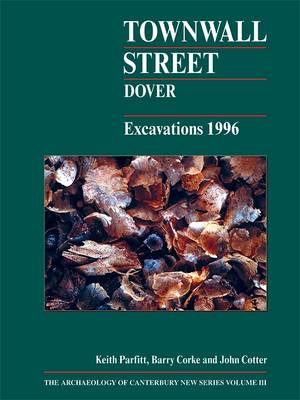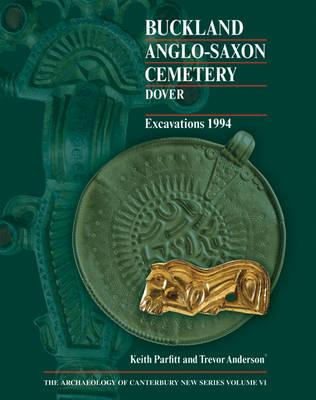Archaeology of Canterbury
2 primary works
Book 3
n 1996 Canterbury Archaeological Trust conducted major excavations on the north-western side of Townwall Street, at Dover, ahead of the reconstruction of a petrol station. The site lies beyond the centre of the historic town, below Dover Castle, about 150 metres inland from the present seashore. It stands upon a ridge of sandy shingle, probably an earlier beach ridge. Contrary to local tradition, there was no evidence that the medieval town wall had ever crossed the site. Part of the area lay over East Brook Water, a large tidal lagoon formed during the sixteenth century.
The earliest activity on the site occurred during the mid to late twelfth century. In the later twelfth century (Period 1 c.1175-1300), more intensive occupation began. A small series of building plots was established. Most of the Period 1 buildings were dwellings. They were associated with large quantities of domestic rubbish including broken pottery, small finds, animal bones and fish bones. The medieval pottery recovered represents a large and important assemblage, which has been analysed in some detail. The significant amount of fish bone found, together with many fish-hooks and other fishing equipment underlines the importance of fishing to the people who lived in this area. Following the densely packed timber buildings of Period 1, there was a marked decline in activity from the end of the thirteenth century. More intensive occupation resumed in the post-medieval period (Period 3, c.1550-1780). A series of buildings was constructed along Clarence Street, although the entire area on the southern side of the street was eventually cleared to make way for Clarence House and later, the Burlington Hotel. Extensive War damage led to large-scale demolition and limited re-development of the district during the 1950s and 60s.
The earliest activity on the site occurred during the mid to late twelfth century. In the later twelfth century (Period 1 c.1175-1300), more intensive occupation began. A small series of building plots was established. Most of the Period 1 buildings were dwellings. They were associated with large quantities of domestic rubbish including broken pottery, small finds, animal bones and fish bones. The medieval pottery recovered represents a large and important assemblage, which has been analysed in some detail. The significant amount of fish bone found, together with many fish-hooks and other fishing equipment underlines the importance of fishing to the people who lived in this area. Following the densely packed timber buildings of Period 1, there was a marked decline in activity from the end of the thirteenth century. More intensive occupation resumed in the post-medieval period (Period 3, c.1550-1780). A series of buildings was constructed along Clarence Street, although the entire area on the southern side of the street was eventually cleared to make way for Clarence House and later, the Burlington Hotel. Extensive War damage led to large-scale demolition and limited re-development of the district during the 1950s and 60s.
Book 6
The 1994 excavations at Buckland, Dover, uncovered another 244 graves in the extensive Anglo-Saxon cemetery first excavated by Professor Vera Evison in 1951-3. Just over two thirds of the burials contained grave goods. Several male burials contained a sword, others a spear and sometimes a shield. Women's graves included brooches and beads and a variety of other objects. The excavation was undertaken by Canterbury Archaeological Trust with the assistance of the British Museum. This detailed study of the cemetery, the individuals interred therein and their grave goods is the product of this close liaison.

